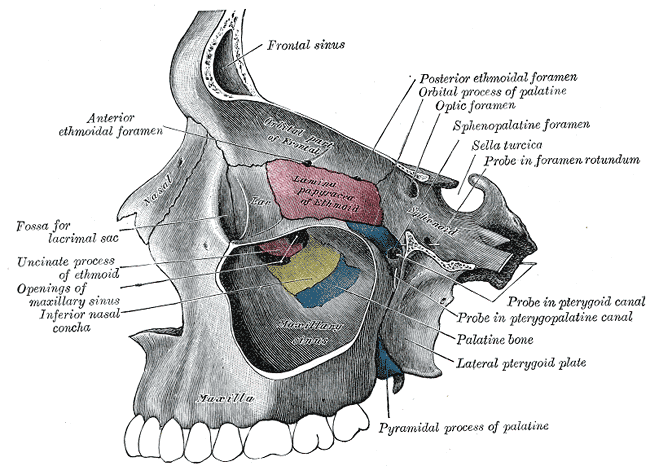
Differences between Sinus and Nasal Cancers
Cancer Types, Risk Factors Differ Throughout Sinonasal System
Sinonasal cancer includes a wide range of malignancies occurring in the nasal and paranasal sinus cavities. As they occur where air first enters the body, scientists Alyson Littman and Thomas Vaughn wrote in Cancer Epidemiology and Prevention that sinonasal cancers often act as “sentinel health events” signaling carcinogenic exposure.
The primary difference between sinus cancers and nasal cancers is their location. “Sinonasal cancer” includes cancers occurring within the nasal cavity and the paranasal sinuses. While some cancer types can occur throughout the sinonasal system, some specifically occur in one or the other because of specific outside carcinogenic exposures.
Nasal cancer
The nasal cavity, also known as the nasal passage, is the very top of the upper respiratory tract. Air passes into the nasal cavity during respiration, cooling to within one degree of body temperature. The nasal passage humidifies the air, and small hairs remove dust and particulate matter before it can enter the lungs.
Along with its respiratory function, the nasal cavity houses specialized cells used in the body’s sense of smell. The nasal passage houses the olfactory segment, lined with olfactory epithelium containing smell reception cells.
Its respiratory role makes the nasal passage one of the body’s gateways for outside materials. Nasal cavity cancers are uncommon, and often signal exposure to carcinogens. One such cancer is papillary adenocarcinoma.
Papillary adenocarcinoma is characterized by tumors that protrude from the nasal cavity lining. A study published Feb. 1, 2016 in Head and Neck Pathology titled “Sinonasal Adenocarcinoma: Update on Classification, Immunophenotype and Molecular Features (Leivo)” stated papillary adenocarcinoma makes up 18% of Intestinal-Type Adenocarcinomas (ITAC). This nasal cancer type is not prone to rapid growth and is the one most frequently seen in wood workers. The International Agency for Research on Cancer monograph on wood dust cites several studies which show high odds ratios of sinonasal cancer diagnoses for employees with long-term wood dust exposures. The National Toxicology Program lists wood dust as a human carcinogen, based on human studies.
Sinus cancer
The paranasal sinuses are four paired, air-filled spaces surrounding the nasal cavity. Most people associate their sinuses with pain and discomfort caused by seasonal allergies.
The four sinuses are the frontal sinuses located in the lower forehead above the nose, the maxillary sinuses in the cheekbones on either side of the nose, the ethmoid sinuses behind the upper nose between the eyes, and the sphenoid sinuses behind the nose in the center of the skull.
Fundamentals of Otolaryngology lists squamous cell carcinoma as the most common sinus cancer, occurring in the thin, flat cells lining the maxillary sinus. A study published in 2013, “Occupational dust exposure and head and neck squamous cell carcinoma risk in a population-based case-control study conducted in the greater Boston area (Langevin),” showed an association between occupational sawdust and metal dust and squamous cell carcinoma.
The second most common sinus cancer is Intestinal-type adenocarcinoma (ITAC), occurring most frequently in the ethmoid sinuses. ITACs are aggressive and can spread to adjacent structures.
The Leivo study showed a “remarkable association” between ITAC diagnoses and long-term wood dust exposure.
According to the Leivo researchers, workers with occupational exposure to wood dusts may show incidences 1000 times those of the general population.
“Interestingly, the highest incidences are seen in woodworkers in the furniture industry where hardwoods, particularly beech and oak, are used,” the researchers said.
The researchers said occupational dust exposure in the shoe and leather industries, as well as chromium and nickel, have also been implicated as causes of ITAC.
If you or a loved one have been diagnosed with either nasal cancer or sinus cancer, please contact the trial attorneys of Allen Stewart, P.C. The firm has decades of combined experience in helping those who have developed cancer due to toxic exposure.
